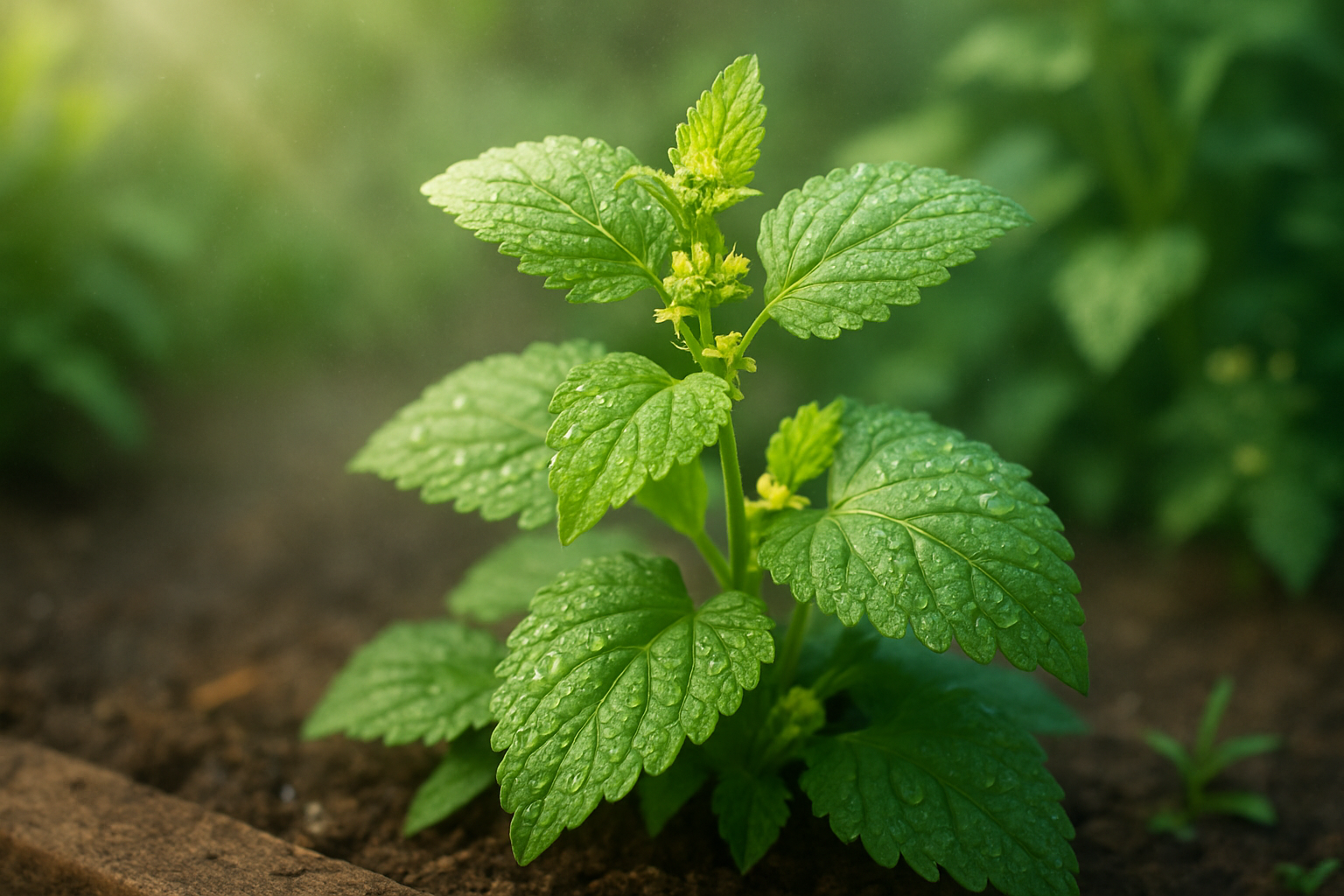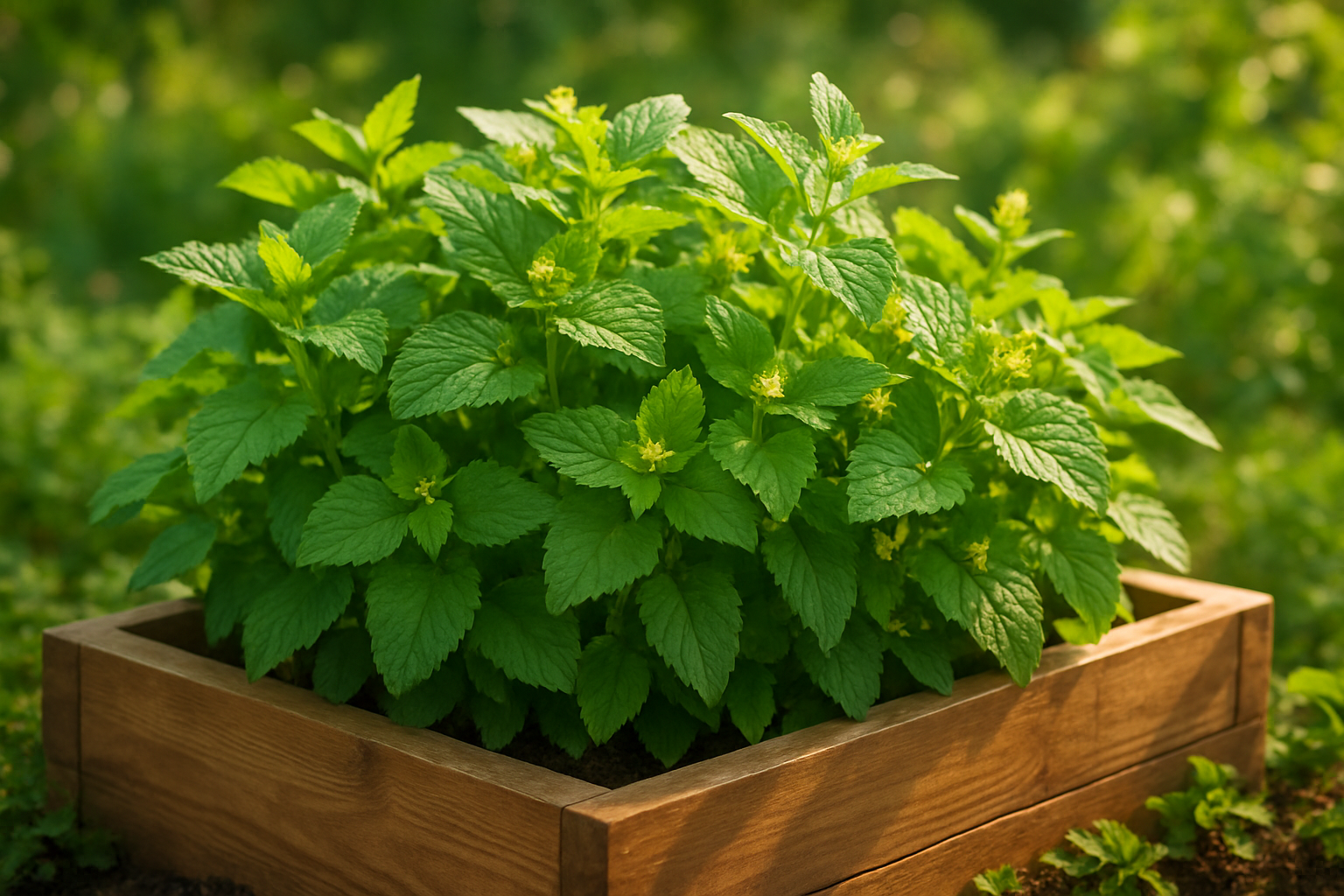Introduction to Lemon Balm and Its Benefits

If you’re curious about growing lemon balm in your garden, you’ll love discovering the advantages of starting a lemon balm raised bed. Lemon balm (Melissa officinalis) is a wonderfully fragrant herb with bright green, textured leaves that release a gentle lemon scent when touched. Popular in both culinary and medicinal circles, this hardy member of the mint family is cherished for its versatility.
Gardeners love to toss freshly chopped lemon balm leaves into teas, salads, and desserts for a refreshing citrusy twist, while herbalists value its calming effects and its ability to ease stress, indigestion, and insomnia.
Beyond the kitchen and medicine cabinet, lemon balm also earns its keep outdoors. Its strong fragrance helps repel mosquitoes and other common garden pests, making it a smart companion plant. Plus, its tiny white or pale yellow flowers attract bees and other pollinators, giving your raised bed ecosystem a natural boost.
So why grow lemon balm in a raised bed? Raised beds let you control soil conditions better—perfect for this herb, which thrives in well-draining, moderately rich soil. They also make it easier to manage the plant’s enthusiastic growth, help prevent root spread, and keep weeds at bay. With just a little care and the right setup, a lemon balm raised bed will reward you with lush harvests, a healthier garden, and aromatic benefits throughout the season.
Best Lemon Balm Varieties for Raised Beds
When choosing the best lemon balm varieties for your raised beds, it’s helpful to consider both their unique characteristics and how well they thrive in a home garden setting. The classic variety, Melissa officinalis, is a top pick for its vigorous growth, lush green leaves, and delightfully bright, lemony scent.
For those looking for a more compact, bushy plant that’s perfect for smaller raised beds or patio containers, ‘Lime’ is a standout—this variety offers a milder citrus aroma with a subtle hint of lime, making it a fresh twist for culinary uses. Another favorite is ‘Quedlinburger Niederliegende,’ known for its hardy, trailing growth and extra-potent scent, which makes it an excellent ground cover between taller herbs.
The main differences you’ll notice among these options are leaf size, plant height, and the intensity of the flavor and scent; classic lemon balm is more vigorous, while dwarf or trailing types are easier to manage in confined spaces.
Starting Lemon Balm
Starting lemon balm from seeds is the most economical choice, though the seeds can be slow to germinate and require patience. Purchasing seedlings at your local nursery speeds up the process and ensures an early harvest. For gardeners who want a guaranteed clone of a favorite variety, cuttings are the way to go—simply snip a healthy stem and root it in moist soil.
By selecting the right lemon balm variety and starting method, you’ll set your raised bed up for a full season of delicious, aromatic growth.
Preparing Raised Beds for Lemon Balm

When preparing a raised bed for lemon balm, start by choosing the right size—aim for beds 3 to 4 feet wide so you can easily reach the center, and at least 6 to 12 inches deep to accommodate lemon balm’s well-developed roots.
Fill your bed with rich, loamy soil that drains well; lemon balm prefers soil with a pH between 6.0 and 7.5. Mix in plenty of compost or well-rotted manure before planting to boost nutrients, but avoid soil that gets soggy as this herb hates wet feet. For drainage, consider adding a layer of coarse gravel or using raised beds with loose, fluffy soil.
Place beds where they’ll receive at least 6 hours of full sun daily—lemon balm thrives in bright, sunny spots but can tolerate a touch of dappled afternoon shade, especially in hotter climates.
When planting, give each lemon balm seedling or plant at least 18 to 24 inches of space; they’ll quickly fill in and can crowd out neighbors if planted too close. Since lemon balm is notorious for spreading by underground runners and self-seeding, contain its vigorous growth by lining the inside of your bed with landscape edging or a root barrier that goes down at least 12 inches.
Regularly pinch back or harvest new growth to keep the plant bushy and manageable, and promptly snip off flowers before they set seed to prevent unwanted spread. Raised beds make it easy to control invasive herbs like lemon balm, and with these preparations, you can enjoy fragrant, healthy plants right through the growing season.
Planting and Propagating Lemon Balm Successfully
Growing lemon balm (Melissa officinalis) is surprisingly easy, whether you’re starting from seeds, cuttings, or nursery transplants. If you want to plant from seed, start indoors about 6-8 weeks before the last expected frost. Press seeds lightly into the soil—lemon balm needs light to germinate—and keep them moist in a warm, bright spot; seedlings usually appear in 10-14 days.
Once the danger of frost has passed and seedlings have at least two sets of true leaves, transplant them outdoors, spacing each plant 12-18 inches apart. If you prefer to direct sow, wait until soil temperatures reach at least 60°F and sow seeds thinly in well-draining soil, covering them very lightly.
For quick results, use nursery transplants; simply plant them after the last frost in a sunny or part-shade spot with moist, fertile soil.
Propagating from Cuttings
To propagate from cuttings, snip healthy 4-inch shoots in spring or early summer, strip off the lower leaves, and root them in water or a moist potting mix. Cuttings will develop roots in 2-3 weeks and can be transplanted once robust.
Propagation by Division
Lemon balm also spreads easily by division—dig up mature plants in spring or fall, separate the root clumps, and replant each section.
Whether you’re looking to expand your crop or share with friends, these propagation methods offer great success with minimal effort. Remember to keep the soil consistently moist but not waterlogged, and pinch back stems regularly for bushier growth and more leaves to harvest.
Lemon balm thrives with little fuss, so don’t hesitate to experiment with different techniques to see what works best in your garden.
Caring for Lemon Balm in Raised Beds
Lemon balm thrives in raised beds thanks to improved drainage and easy access for care and harvesting. To keep your lemon balm lush, water regularly—aim for a deep, even soaking once or twice a week, depending on your climate. The soil should be kept consistently moist but not soggy; check by inserting your finger an inch deep, and water if it feels dry.
Mulching with straw or shredded bark not only conserves moisture and cools roots but also helps suppress weeds that can crowd lemon balm’s shallow root system. Every spring, use a balanced organic fertilizer or side-dress with compost to provide steady nutrients for vigorous growth. Avoid heavy doses of nitrogen, as they can make the leaves less aromatic.
Lemon balm is fairly hardy against pests, and its lemony scent actually helps deter mosquitoes and gnats—making it a dual-purpose plant for the garden. However, aphids and spider mites can occasionally appear. You can control these organically by spraying the undersides of leaves with a strong blast of water or with insecticidal soap if needed.
Regular pruning is key for a healthy crop: harvest leaves just after the plant flowers for the best flavor, and don’t be afraid to cut stems back by a third; this encourages new growth and prevents legginess. At the end of summer, you can shear the plant almost to the ground, which keeps it compact and productive year after year. Always use sharp, clean scissors or pruners to avoid spreading disease.
With these care strategies, your lemon balm will be both a culinary delight and a helpful ally in the garden.
Harvesting and Using Your Lemon Balm
For the best flavor, harvest your lemon balm in the morning after the dew has dried but before the sun gets too hot. Ideally, pick the leaves just as the plant begins to flower—this is when they are most aromatic. Use clean, sharp scissors to snip off stems, taking only about a third of the plant so it will continue to thrive.
To dry lemon balm, tie small bunches of stems and hang them upside down in a warm, airy place out of direct sunlight. Alternatively, spread the leaves on a baking sheet lined with paper towels for a faster method. Once thoroughly dry, crumble the leaves and store them in an airtight container away from heat and light.
For fresh use, rinse the leaves and pat them dry; snip or tear them just before adding to dishes for maximum flavor. Lemon balm is wonderfully versatile—add it to salads, fruit salsas, or use it as a garnish for desserts and drinks.
Steep a handful of fresh or dried lemon balm in hot water for a calming herbal tea, or infuse it into honey for a soothing cough remedy. You can also make a simple bug repellent spray by steeping lemon balm leaves in boiling water, letting it cool, and then straining it into a spray bottle—great for naturally deterring mosquitoes.
Don’t forget to toss a few sprigs into bathwater for a relaxing, skin-soothing soak, or combine lemon balm with vinegar for a natural, lemony household cleaner.
Overwintering and Long-Term Care
Overwintering lemon balm in colder climates can be simple with the right steps. In late fall, trim the plants back to just a few inches above the soil, then insulate the raised bed with a thick layer of straw, leaves, or mulch. This will help protect the roots from harsh freezing and thawing. You can also use row covers for extra wind protection.
If your winter is exceptionally severe (zone 4 or colder), consider potting a few clumps and overwintering them indoors near a sunny window.
To keep lemon balm thriving year after year, divide mature plants every 3–4 years in early spring or fall. Gently dig up the root ball, separate the clumps, and replant. This not only rejuvenates tired plants but also helps control their spread.
Watch out for common setbacks:
- Yellowed or dying stems in spring can signal root rot from soggy soil, so ensure your raised beds drain well.
- Legginess usually results from too little light or overcrowding; thin plants and reposition beds to receive six or more hours of sun.
Regular pruning throughout the growing season keeps lemon balm bushy and productive—snip off flower buds to encourage lush leaf growth and fresh aroma all summer long.
